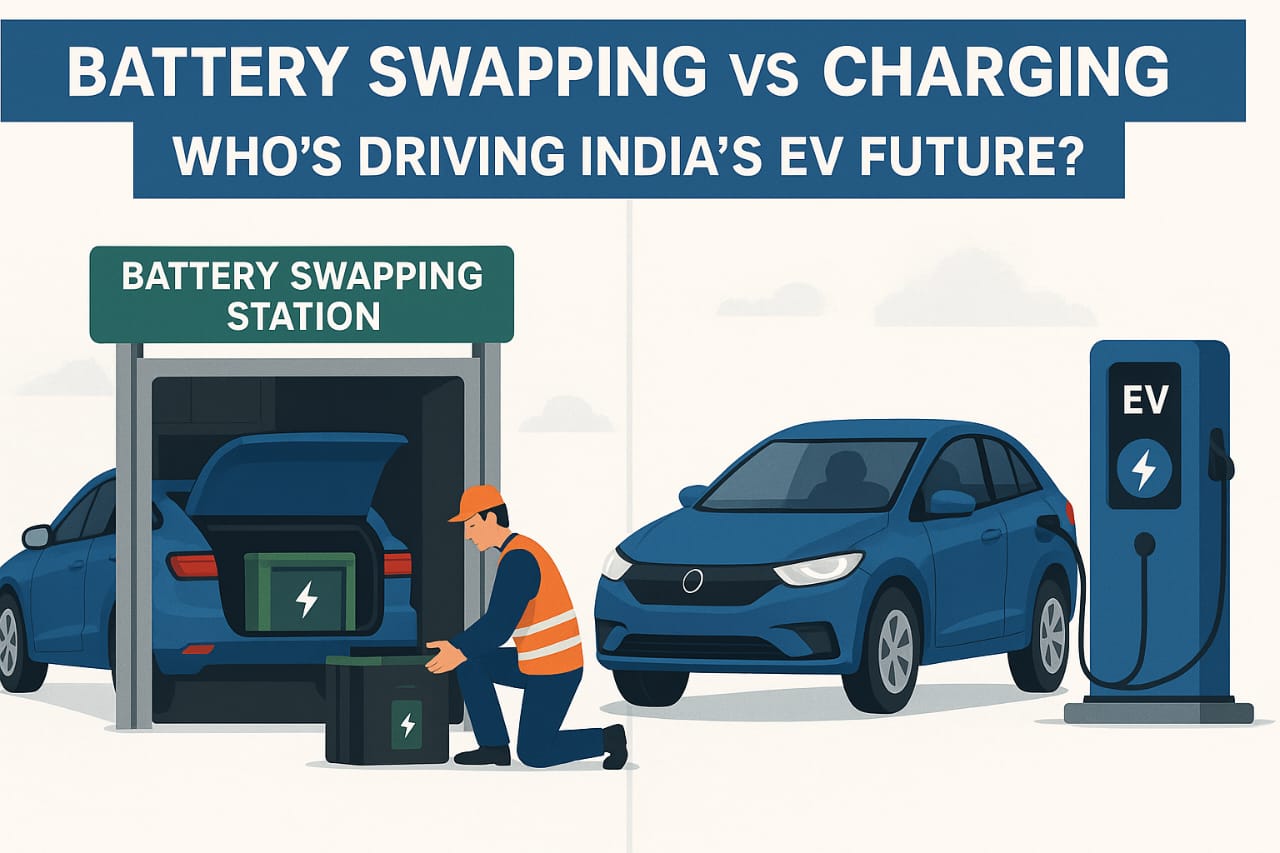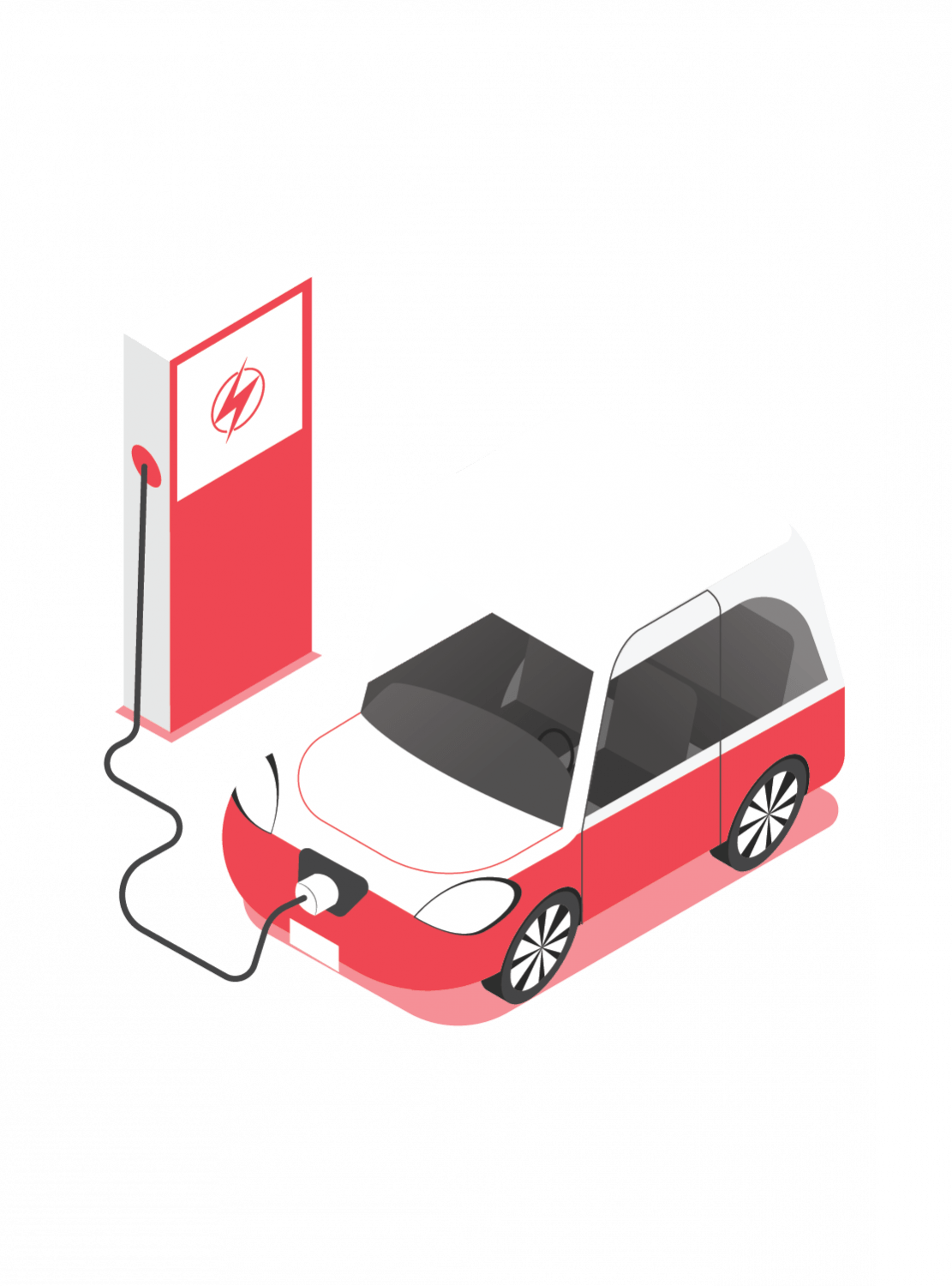Can Battery Swapping Technology Skip Charging Stations in India?
The electric vehicle (EV) market in India is growing. But one thing has kept the rapid adoption at bay: the charging infrastructure. While plug-in charging has been the go-to method globally, an alternative is picking up speed here—Battery Swapping Technology. But can it really replace traditional charging stations?
Let’s unpack and analyse the matter.
What is Battery Swapping Technology?
Instead of waiting for an EV to charge, battery swapping stations allow drivers to exchange a depleted battery with a fully charged battery at a swap station within minutes, making it a quicker alternative to charging.
These “refueling-like” experiences have a major sway with India’s logistics, fast-paced delivery services, and high-density urban areas.
It also sets in motion battery design and energy management innovations. Since the batteries can be charged off-site, the charging station can sell electricity during peak hours, drawing off-peak electricity to charge the batteries, or charge batteries with renewables, thus decreasing grid loads and lowering carbon footprints. This put battery swapping on the map as a convenient yet sustainable long-term option.

🔍 Why It Makes Sense for India
- ⏱️ Time-Saving: Charging can often take hours, whereas a battery swap takes about 2 to 5 minutes.
- 💰 Cost Reduction: (Battery-as-a-Service) BaaS-based EVs can be purchased by customers without a battery upfront, reducing initial costs.
- 🏙️ Space-Efficient: In congested cities, installing bulky charging setups isn’t always practical, but swapping stations take less space.
- 🚛 Boosting Commercial EVs: Faster turnaround times equate to faster scaling for fleet operators and last-mile delivery companies.
- 🌱 Accelerates EV Adoption in India: By removing key pain points such as range anxiety, cost of high upfront payments, and waiting time.
Policy Push from the Government
With a view to give a policy push to the battery swapping technology, the Indian government has clearly indicated:
- NITI Aayog’s Battery Swapping Policy (2022) pushes for standardisation and interoperability.
- State-level EV policies (Delhi, Maharashtra, Tamil Nadu) provide incentives for swapping stations.
- FAME-II scheme accelerates adoption by way of support for infrastructure innovation.
With localisation of battery production, the average cost of swappable batteries is expected to go down, making them viable for the everyday consumer.
This sends a loud and clear message: battery swapping isn’t just an idea, it’s a national priority. In addition, battery swapping is consistent with circular economy principles, wherein batteries can be centrally tracked, serviced, and recycled economically and with greater efficiency.
But There Are Challenges
Even with all the momentum, the implementation of battery swapping technology faces roadblocks:
- 🔄 No Standard Batteries Yet: Absence of universally accepted designs across OEMs.
- 💸 High Initial Costs: Infrastructure investment and inventories need quite a bit of capital.
- ❓ User Trust: Would they trust their fellow stranger to provide a battery? And user’s other concerns over battery health and its lifespan.
- 🚗 Limited Scope: Works best with two and three-wheelers, for now.
🔄 Swap or Charge? Why Not Both!
So, will the battery swapping technology completely bypass or replace charging stations in existence?
The answer is Not entirely. Almost certainly, both technologies will coexist but each would serve a separate category of users:
- Private EV users may prefer home or public charging.
- Fleet operators shall go in for swapping for speed and efficiency.
The future of Indian EV infrastructure would soon be based on hybrid models that integrate charging stations, battery swapping, and smart grids.
🔮 What’s Next?
On the leading edge, Sun Mobility, Battery Smart, and Ola Electric are rolling out battery swapping station networks in metro cities.
Given the right mix of innovation, public-private front, and policy alignment, India could well nurture a global battery swapping revolution.
Various battery swapping networks exist globally, with China standing out as successful, especially for battery swapping needs of two- and three-wheelers. India can take away the idea and tailor it to its level of urban density and energy ecosystem.
Final Thought
We are not out here skipping charging stations with Battery Swapping Technology—we are out making EV charging faster, cheaper, smarter.
🚀 It is one of the vital pieces of the electric mobility scenario in India.
🔁 What do you think?
Would battery swapping become the primary way of charging EVs in India?
📩 Want to explore EV innovation, career opportunities, or set up a EV Lab in your college/University?
👉 Fill out our interest form now and let’s electrify the future — together!




